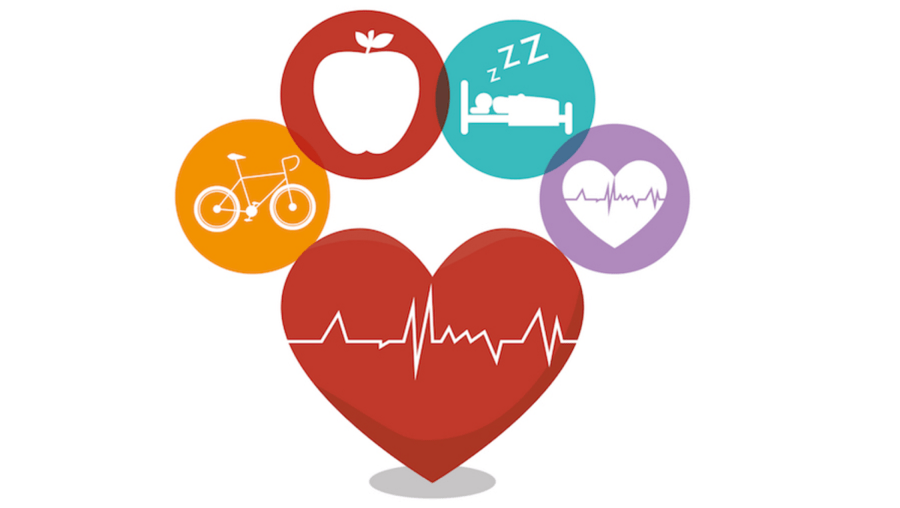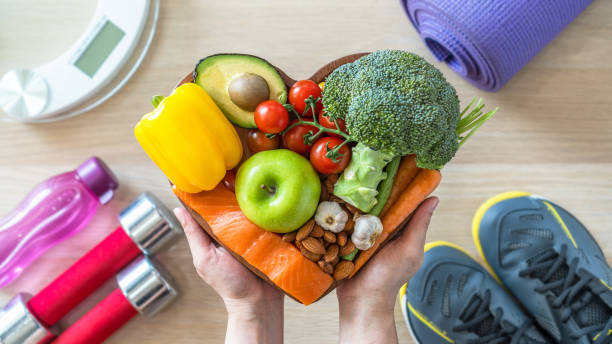🔥 Want to get in shape fast? 💪 Check out these 15-minute full-body workouts for quick results! 🏋️♀️🔝 Get ready to sweat and see amazing changes in no time. Don't miss out, read the article now! 🌟😃
Updated at: 2025-06-22 02:02:34 (3 months ago by Melkisedeck Leon Shine)
Optimizing Time Efficiency in Fitness: High-Intensity Training Protocols for Full-Body Conditioning
This article investigates the efficacy of high-intensity training (HIT) methodologies for achieving comprehensive full-body fitness within a 15-minute timeframe. We will analyze the principles of exercise physiology and their practical application in designing effective and time-efficient workout routines. Key concepts include High-Intensity Interval Training (HIIT), characterized by short bursts of intense exercise interspersed with brief recovery periods; progressive overload, a foundational principle of strength training which involves gradually increasing the intensity or volume of exercise over time; and the integration of diverse training modalities to maximize results and prevent adaptation plateaus. These concepts will be applied to real-world scenarios, providing practical examples for individuals with limited time constraints.
1. The Foundation: High-Intensity Interval Training (HIIT) and its Physiological Basis: HIIT leverages the interplay of anaerobic and aerobic metabolic pathways. Short bursts of intense exercise followed by brief recovery periods induce significant physiological adaptations. The Wingate anaerobic test, a benchmark assessment of anaerobic power, demonstrates the effectiveness of this approach. A practical HIIT protocol might involve 30 seconds of burpees followed by 30 seconds of rest, repeated for eight rounds. This stimulates a robust cardiovascular response and induces significant muscular adaptations due to high intensity and short recovery intervals. The post-exercise oxygen consumption (EPOC) effect, the elevated metabolic rate following exercise, further enhances caloric expenditure and contributes to fat oxidation.
2. Refining HIIT: The Tabata Protocol for Anaerobic Power Enhancement: The Tabata protocol represents a highly specific application of HIIT, optimized for maximizing anaerobic power output. It consists of 20 seconds of maximal effort followed by 10 seconds of rest, repeated for eight rounds. This protocol effectively targets both anaerobic and aerobic energy systems, resulting in rapid improvements in power and cardiovascular fitness. The effectiveness is predicated on the principle of supramaximal effort, pushing muscles beyond their steady-state capacity to trigger significant adaptive responses. A practical application involves performing maximal-effort squats for 20 seconds, resting for 10 seconds, and repeating the cycle. This method is highly time-efficient due to its short, intense intervals.
3. Holistic Conditioning: Circuit Training for Comprehensive Fitness: Circuit training integrates multiple exercises targeting different muscle groups with minimal rest between sets. This approach simultaneously improves cardiovascular fitness, promotes muscular endurance, and facilitates strength development. The principle of muscle confusion, which helps prevent adaptation plateaus by constantly varying the training stimulus, underpins this method's effectiveness. A sample circuit might combine squats, push-ups, lunges, and rows, performed sequentially with minimal rest. This holistic approach stimulates various muscle fiber types, promoting overall fitness.
4. Progressive Overload and Bodyweight Training: Accessibility and Adaptability: Bodyweight exercises, such as squats, push-ups, and planks, provide an accessible and effective means of building strength and improving body composition. The principle of progressive overload, central to strength training, is critical for sustained progress. This principle is achieved by gradually increasing repetitions, sets, or exercise difficulty (e.g., progressing from knee push-ups to standard push-ups). Bodyweight training's adaptability makes it suitable for various fitness levels and environments.
5. Enhancing Power and Explosiveness with Plyometrics: Plyometric exercises, such as box jumps and jump squats, emphasize explosive movements that enhance power and neuromuscular coordination. These movements leverage the stretch-shortening cycle, utilizing the elastic properties of muscles to generate greater force. Incorporating plyometrics into a 15-minute workout significantly increases metabolic demand, contributing to improved athletic performance and caloric expenditure. The enhanced power translates into improved performance in daily activities.
6. Variable Resistance Training with Resistance Bands: Muscle Hypertrophy and Functional Movement: Resistance bands offer variable resistance, challenging muscles throughout their full range of motion. This method is particularly effective for building muscle strength and endurance, especially beneficial for individuals with limited access to weight training equipment. The variable resistance more closely mirrors real-world movement patterns compared to fixed-weight training. Exercises like bicep curls, lateral walks, and rows can be easily performed with resistance bands, showcasing their versatility and adaptability.
7. Kettlebell Training: Functional Strength and Cardiovascular Integration: Kettlebell exercises, including swings, goblet squats, and Turkish get-ups, promote functional strength, improving overall power and coordination. These exercises engage multiple muscle groups concurrently, contributing to improved cardiovascular fitness and enhanced calorie burning. Kettlebell training offers a dynamic and challenging approach to full-body conditioning within a short timeframe.
8. Core Stability and Injury Prevention through Pilates: Pilates focuses on controlled movements that strengthen core muscles, improving postural alignment and stability, thereby reducing injury risk and enhancing body mechanics. The emphasis on proper form and controlled breathing fosters mind-body connection. Integrating Pilates enhances core strength, improves flexibility, and promotes greater body awareness.
9. Yoga Flow: Flexibility, Strength, and Mindfulness Integration: Yoga flow, using dynamic sequences such as sun salutations, provides a full-body workout, enhancing flexibility and mindfulness. Controlled movements engage multiple muscle groups, improving strength, flexibility, and cardiovascular fitness. The mindfulness component contributes to stress reduction and overall well-being.
10. Jumping Rope: A High-Intensity Cardiovascular Workout: Jumping rope is a highly effective cardiovascular exercise engaging multiple muscle groups simultaneously. It offers a simple yet intense workout easily integrated into a 15-minute routine. Its high-intensity nature effectively elevates heart rate and caloric expenditure.
11. Dance Workouts: Engaging Cardiovascular and Muscular Fitness: Dance workouts provide an enjoyable method for improving cardiovascular fitness and muscle tone. Various dance styles, such as Zumba or hip-hop, cater to different fitness levels. The enjoyable nature of dance workouts promotes adherence to a fitness regimen.
12. Stair Climbing: A Powerful Cardiovascular and Lower-Body Workout: Stair climbing is a highly effective cardiovascular exercise primarily targeting the lower body. The added resistance of gravity enhances the challenge, leading to increased muscle strength and endurance. Its accessibility and simplicity make it a convenient and effective choice.
13. Boxing Drills: Cardiovascular Fitness and Coordination Enhancement: Boxing drills, including shadow boxing or heavy bag work, improve cardiovascular fitness and coordination. The full-body engagement and dynamic nature contribute to enhanced calorie burning and improved physical conditioning.
14. Swimming: Low-Impact Full-Body Conditioning and Cardiovascular Benefit: Swimming is a low-impact, full-body workout engaging multiple muscle groups simultaneously. It offers excellent cardiovascular conditioning without the joint stress associated with high-impact exercises. Swimming's versatility makes it suitable for various fitness levels.
15. Outdoor Sprints: Anaerobic Capacity and Lean Muscle Development: Outdoor sprints are a powerful form of HIIT, enhancing anaerobic capacity and lean muscle building. Variable terrain and environmental factors add to the challenge, increasing the overall training effect.
Conclusions and Recommendations
This analysis of diverse HIT methodologies demonstrates the viability of achieving substantial fitness gains within a 15-minute timeframe. Success hinges on optimizing training intensity and selecting exercise modalities aligned with individual goals and preferences. HIIT, Tabata, and circuit training offer efficient approaches to full-body conditioning. Incorporating bodyweight exercises, resistance bands, or kettlebells enhances training variety and prevents plateaus. The consistent application of progressive overload and principles of muscle confusion are crucial for long-term progress. Future research should compare the effectiveness of different HIT protocols across diverse populations and fitness levels, assessing long-term adherence and potential injury risks. A personalized approach, considering factors such as experience, fitness level, and equipment access, is essential for optimal results and sustained adherence to a fitness program. Furthermore, future studies could explore the optimal combination of these training modalities for various fitness goals and population groups. This would involve rigorously designed research studies comparing the effectiveness of different training protocols, considering factors such as adherence and injury prevention. A deeper understanding of individual physiological responses to these high-intensity training methods would also be valuable. This could involve utilizing advanced physiological assessment tools to monitor adaptations at the molecular and cellular level.
Reader Pool: Considering the diverse methodologies presented, what factors should individuals prioritize when selecting a 15-minute full-body workout routine, and how might these choices be tailored to accommodate varying fitness levels and personal preferences?





